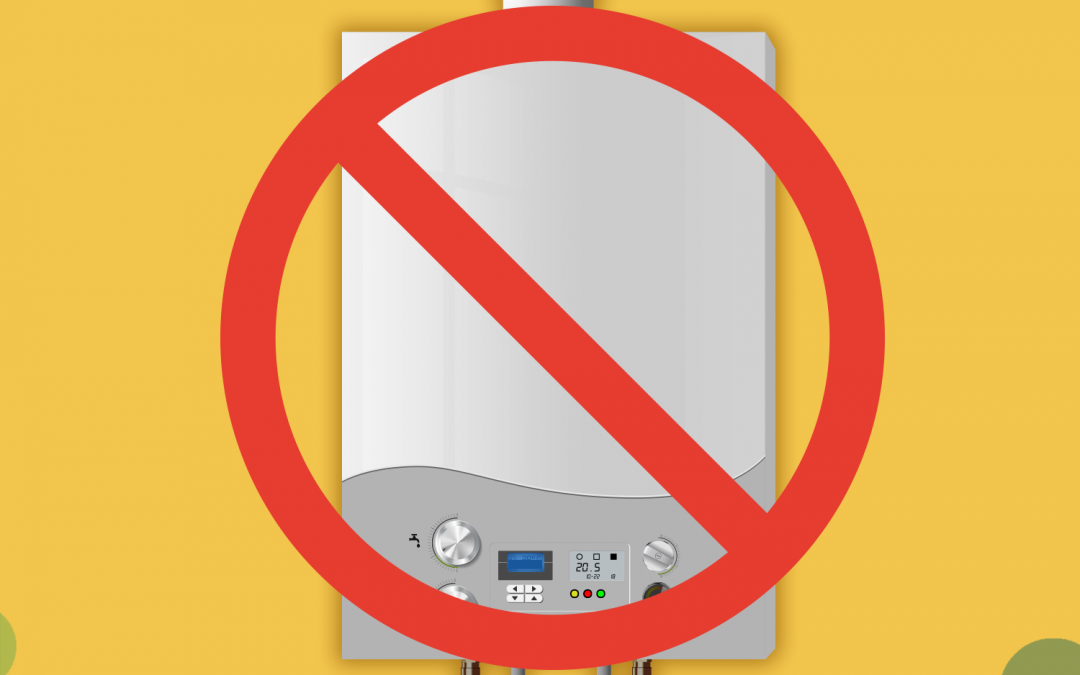It’s time to rethink how we heat our homes. Our almost exclusive use of traditional gas boilers is incredibly inefficient, and the cost is reflected in our energy bills and our declining environment.
Last year, Chancellor Phillip Hammond announced the government wants to work towards the end of gas boiler installation for central heating and water in all new domestic residences by the year 2025. This is a landmark move to reduce Britain’s output of greenhouse gases and carbon emissions.
The question remains, what exactly do we replace them with? In this blog, we will outline what an air source heat pump is and explain why it is the logical green alternative to a traditional gas boiler.
How do Air Source Heat Pumps Work?
Air source heat pumps work in a very similar way to a fridge, except they heat air and water rather than cool it. In essence, they draw heat from the air and use it to warm refrigerant which becomes a gas which is then transferred to key locations to heat water and your home.
The pump itself sits outside your home and looks like a large air conditioning unit, with a fan that moves visibly but remains quiet. There is only a gentle purring that you can hear when very close to it.
Once the heat has been taken from the heated refrigerant for use in the home, it cools and reverts to liquid form. This liquid then returns to the outside element of the system where it can once again be heated by the warmth collected from the outside air.
Are Air Source Heat Pumps Good for the Environment?
Our current methods of acquiring energy to fuel our societies are having a dangerous effect on the health of the planet. Not only are we relying on finite sources of fossil fuels that release dangerous chemicals into the environment and heat the Earth, but we also use these fuels very inefficiently.
Air source heat pumps are a tried and tested form of renewable energy generation. Instead of using finite sources of fuel, it takes advantage of heat from the air and uses it with incredible efficiency to heat our homes.
The result of this technology is a reduction in your carbon footprint by an incredible 40%.
Can an Air Source Heat Pump Heat my Home on its Own?
Many people we speak to want to know whether or not an air source heat pump can meet all of their heating requirements on its own. This depends largely on the size of your home.
For small to medium homes, an air source heat pump is perfectly capable of providing all of the heat you need for hot water and a warm home. Even in lower temperatures, the efficiency of the pump will mean you can ditch the boiler and enjoy a lower carbon footprint and cheaper energy bills.
For larger homes, you might find that an air source heat pump is better used in conjunction with a gas boiler. Although this means you can’t ditch the fossil fuels altogether, it does mean you can reduce your carbon footprint significantly and this will be reflected in your energy bills.
Eco Power will work with you to come up with a system that is entirely tailored for your house.
Does an Air Source Heat Pump Work in the Winter?
Another question we are commonly asked is whether or not air source heat pumps work in winter. This is a logical question. If the air is cold, surely there is no heat to take? Surprisingly, this is not the case – there is a lot more heat in the air than you might realise, even during cold British winters.
Even when temperatures fall as low as around 10°C, the air source heat pump will still work to heat your home, although naturally, it will work with less efficiency than, for example, on a warm Summer’s day.
Get in Touch
Are you still on the fence in regards to whether or not an air source heat pump is the right choice for you? We’re happy to come out and assess your home. We’ll suggest a system that meets your requirements, and outline all of the associated costs.
Interested in finding out more? Click here to reach out to Eco Power Innovations today.


